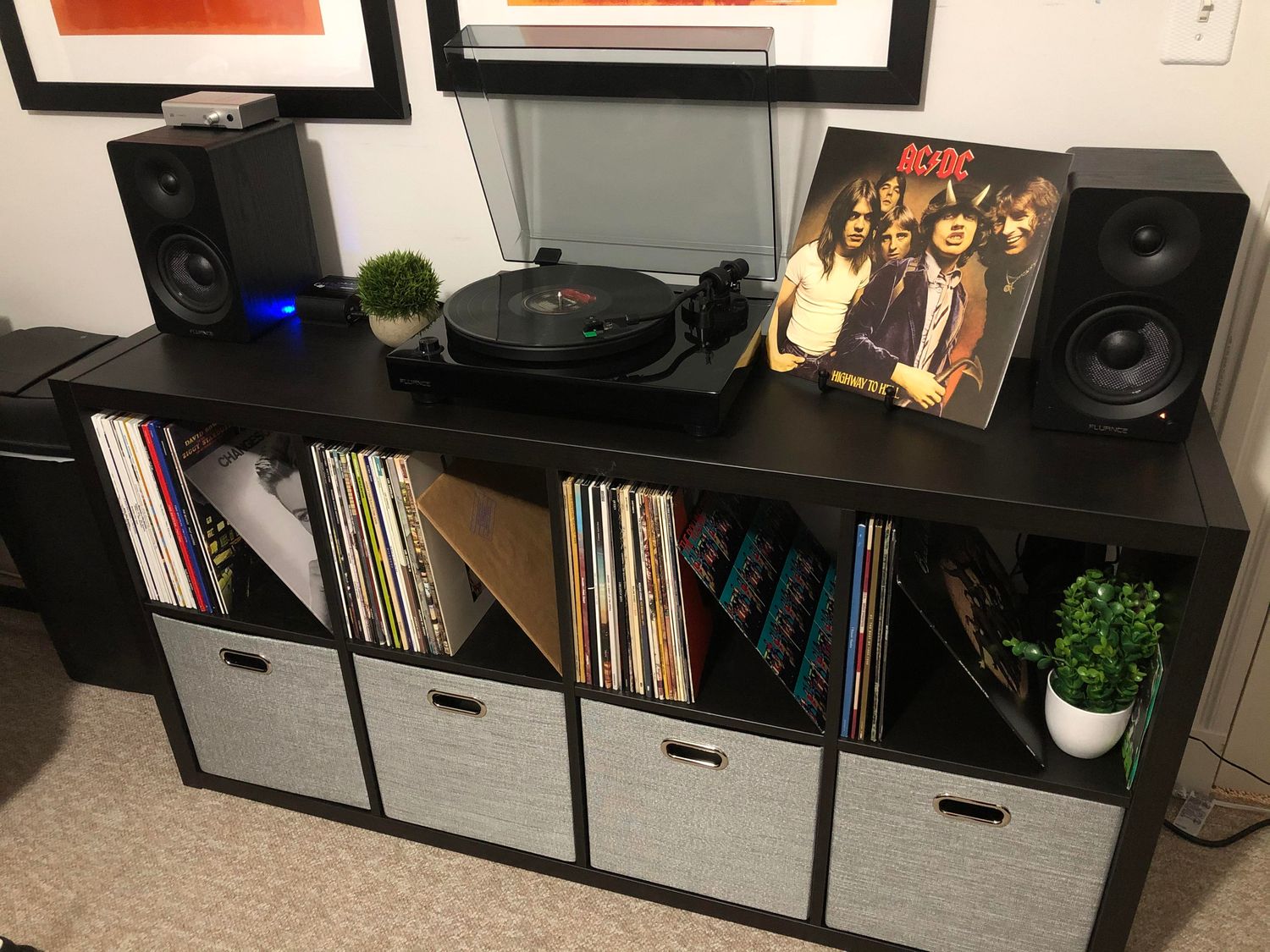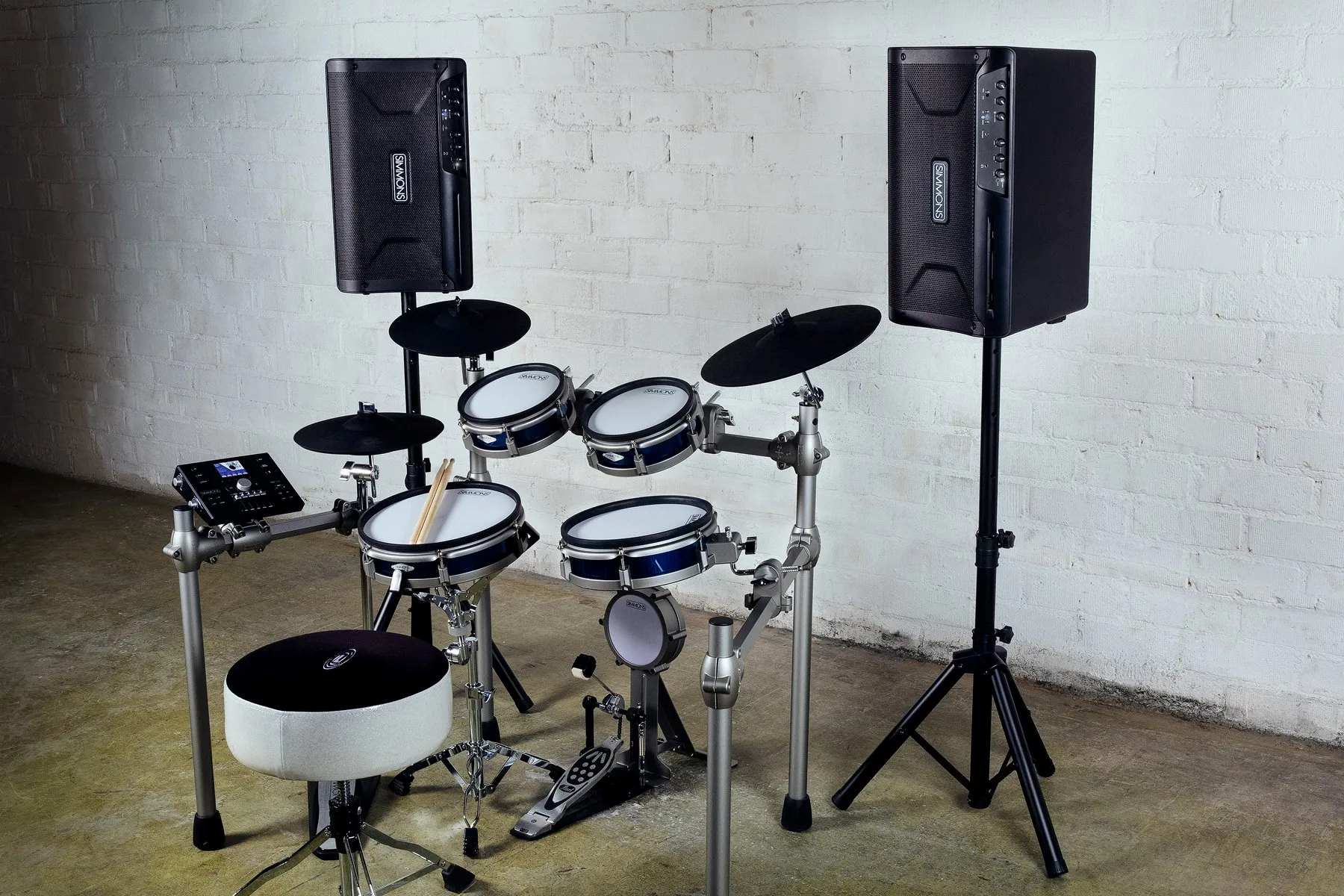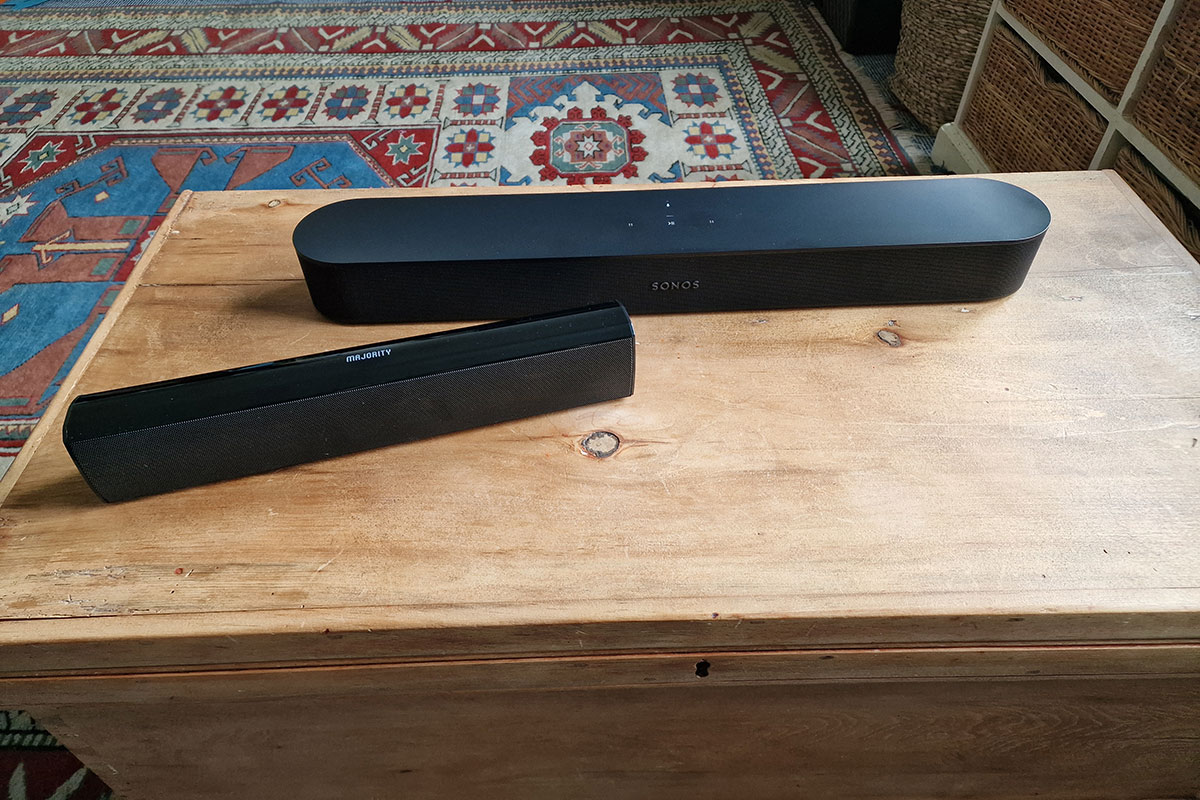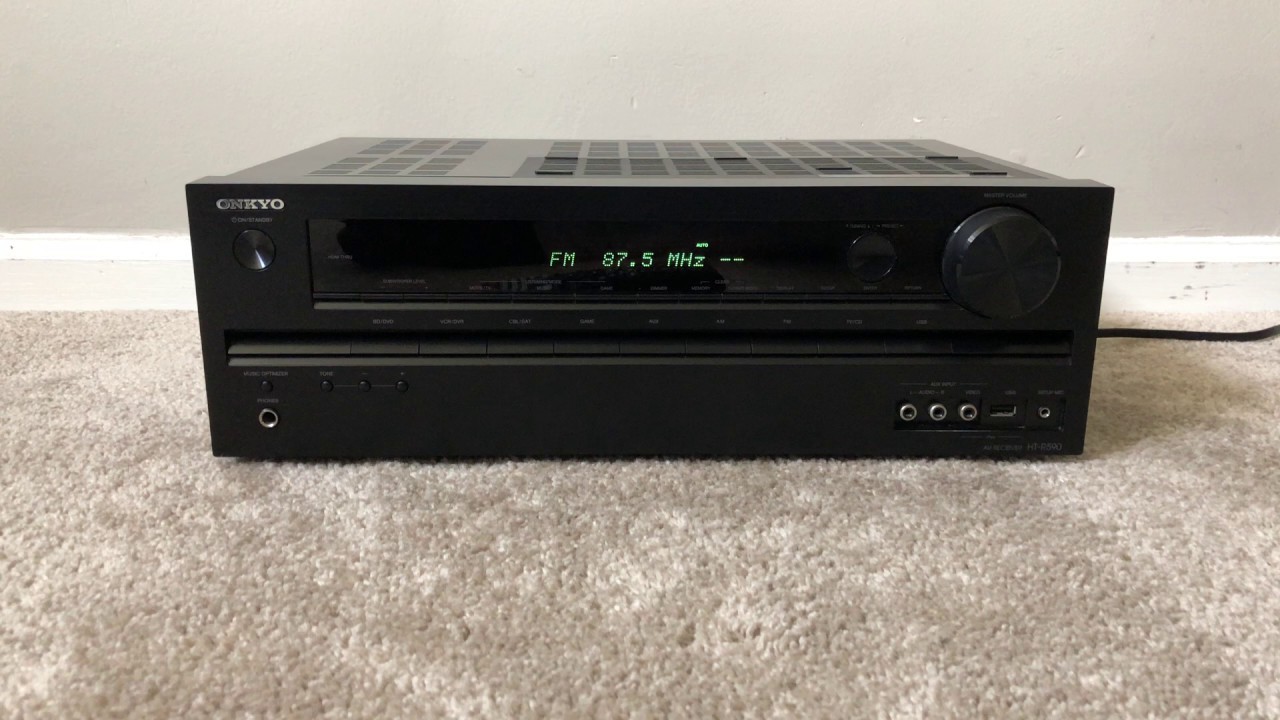Home>Production & Technology>Surround Sound>What Kind Of Receiver Do I Need For Surround Sound
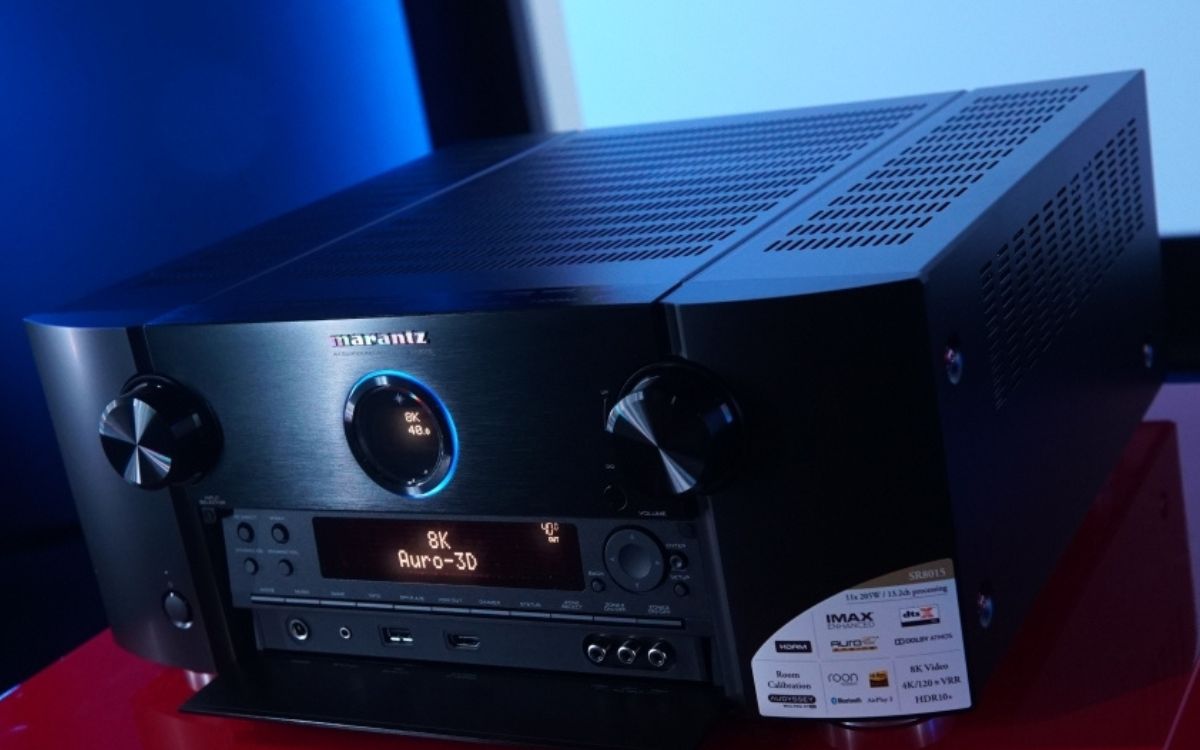

Surround Sound
What Kind Of Receiver Do I Need For Surround Sound
Modified: January 22, 2024
Find the perfect receiver for your surround sound system. Discover the features and functionality you need to enhance your audio experience with surround sound.
(Many of the links in this article redirect to a specific reviewed product. Your purchase of these products through affiliate links helps to generate commission for AudioLover.com, at no extra cost. Learn more)
Table of Contents
Introduction
Welcome to the world of surround sound! If you’re looking to elevate your audio experience and immerse yourself in a rich and realistic sound field, surround sound is the way to go. Whether you’re a movie buff, a music lover, or a gaming enthusiast, surround sound systems can bring your entertainment to life by enveloping you in a multi-dimensional audio environment.
In this article, we will delve into the world of surround sound and explore the crucial role that a receiver plays in this setup. We’ll discuss the different types of surround sound systems, the importance of a receiver, and the factors to consider when choosing the right receiver for your needs.
But first, let’s start by understanding what exactly surround sound is and why it offers a superior audio experience compared to traditional stereo.
Surround sound is a technology that creates a three-dimensional sound field by distributing audio signals to multiple speakers placed strategically around a room. By placing speakers in different locations, surround sound systems can replicate the spatial cues present in real-life soundscapes, enhancing the overall audio immersion.
With a stereo system, sound usually comes from two speakers placed in front of the listener. While stereo can deliver decent audio quality, it lacks the dimensionality and depth that surround sound can provide. Surround sound systems, on the other hand, add additional speakers placed behind and to the sides of the listener, allowing for a more realistic and immersive sound experience.
Now that we have a basic understanding of surround sound, let’s explore the different types of surround sound systems available to suit various preferences and setups.
Understanding Surround Sound
Surround sound is a technology that aims to recreate a realistic and immersive audio experience by delivering sound from multiple directions. It is achieved by utilizing multiple speakers strategically placed around the listener. These speakers work in tandem to create a three-dimensional sound field, enveloping the listener in a virtual audio environment.
The most common surround sound configurations are based on the number of channels, indicated by a number and a decimal point. For example, a 5.1 surround sound system consists of five main speakers and a subwoofer, while a 7.1 system includes seven main speakers and a subwoofer.
Each speaker in a surround sound system has a specific role to play in recreating a realistic audio experience. The front speakers, usually placed in front of the listener, are responsible for delivering dialogue, music, and sound effects. The center speaker, located between the left and right front speakers, is dedicated to reproducing dialogue, ensuring clear and intelligible speech. The surround speakers, positioned to the sides or behind the listener, create a sense of envelopment and spatiality by providing ambient sounds and directional effects. Finally, the subwoofer, responsible for low-frequency sounds, adds depth and impact to explosions, rumbling footsteps, and other bass-heavy effects.
One of the key elements of surround sound is the concept of sound localization. By distributing sound through multiple speakers, surround sound systems can accurately reproduce the direction from which a sound originates. This enhances the overall realism and immersiveness of the audio experience. For example, dialogue can come from the center speaker, gunfire from the front speakers, and ambient noises from the surround speakers, creating a truly immersive cinematic experience.
It’s important to note that not all content is created with surround sound in mind. While many movies, TV shows, and video games are mixed for surround sound, some older or lower-budget content may only support stereo playback. However, even with stereo content, a surround sound system can still provide an enhanced listening experience by utilizing virtual surround sound technologies.
Now that we have a solid understanding of surround sound, let’s explore the different types of surround sound systems available to cater to various preferences and setups.
Different Types of Surround Sound Systems
Surround sound systems come in various configurations, each offering a unique audio experience. The choice of a surround sound system depends on factors such as room size, budget, and personal preferences. Let’s take a closer look at some of the different types of surround sound systems available:
- 5.1 Surround Sound: This is one of the most popular and widely used surround sound configurations. It consists of five speakers – two front speakers, a center speaker, two surround speakers – and a subwoofer. The front speakers reproduce dialogue and primary audio, while the surround speakers create ambient sounds and directional effects. The subwoofer adds deep bass for rumbling explosions and impactful low-frequency effects.
- 7.1 Surround Sound: Building upon the foundation of 5.1 surround sound, the 7.1 configuration adds two additional surround speakers. These extra speakers offer enhanced immersion and a more precise sound localization experience.
- Dolby Atmos: Dolby Atmos takes surround sound to a new level by introducing height channels. In addition to the speakers placed around the listener, Atmos systems incorporate dedicated speakers or modules placed above the listener, creating a truly immersive three-dimensional sound field. With Dolby Atmos, sound objects can be precisely positioned in 3D space, allowing for a more dynamic and realistic audio experience.
- DTS:X: DTS:X is another object-based audio technology that offers a similar immersive audio experience as Dolby Atmos. It allows for precise positioning of sound objects in a three-dimensional space, giving content creators greater flexibility and creating a more lifelike sound environment.
- Stereo Upmixing: While not a distinct surround sound configuration, stereo upmixing technologies like Dolby Surround and DTS Neural:X can enhance the audio experience of stereo content on a surround sound system. These technologies analyze the stereo signal and expand it to utilize all available speakers, creating a more immersive soundstage.
It’s important to note that the type of surround sound system you choose should align with your specific needs and the capabilities of your room. Factors such as room size, layout, and speaker placement options will play a role in determining the most suitable configuration for you. Additionally, consider audio formats and content support, as some configurations may require specific audio codecs or be better suited for certain types of media.
Now that we have explored the different types of surround sound systems, let’s move on to understand the importance of a receiver in a surround sound setup.
The Importance of a Receiver in Surround Sound
A receiver is a key component of any surround sound system, serving as the central unit that connects and controls all the audio sources, speakers, and other devices in the setup. It acts as the hub that receives audio signals, processes them, and distributes them to the appropriate speakers, ensuring a seamless and synchronized audio experience.
Here are a few reasons why a receiver is essential in a surround sound system:
- Audio Processing: A receiver is equipped with advanced audio processing technologies that decode audio signals from different sources, such as Blu-ray players, gaming consoles, or streaming devices. It supports various audio formats, ensuring that you can enjoy high-quality sound from different media sources without any compatibility issues.
- Channel Management: Surround sound systems consist of multiple speakers that deliver sound from different channels. A receiver plays a crucial role in managing and controlling these channels by sending the appropriate audio signals to each speaker. It ensures that dialogue comes from the center speaker, ambient sounds from the surround speakers, and low-frequency effects from the subwoofer.
- Signal Amplification: In addition to processing audio signals, a receiver also amplifies them to ensure sufficient power for the speakers. By amplifying the signals, the receiver enhances the clarity, volume, and overall audio performance of the surround sound system.
- Switching and Connectivity: Receivers provide multiple input and output options, allowing you to connect various devices, such as game consoles, Blu-ray players, streaming devices, and even TVs. They act as a central hub, enabling easy switching between different audio and video sources and eliminating the need for multiple connections directly to the TV.
- Room Calibration: Many receivers come with built-in room calibration features that optimize the audio output based on the specific attributes of your room. These features utilize microphones and advanced algorithms to analyze the room’s acoustics and adjust the audio settings accordingly, ensuring optimal sound quality for your listening environment.
Overall, a receiver plays a critical role in delivering a seamless, immersive, and high-quality surround sound experience. It simplifies the setup process, facilitates audio processing, manages channel distribution, and provides various connectivity options. Investing in a quality receiver will enhance your overall audio experience and allow you to make the most out of your surround sound system.
Now that we understand the importance of a receiver, let’s explore the considerations for choosing the right receiver for your surround sound setup.
Considerations for Choosing the Right Receiver
Choosing the right receiver for your surround sound system is crucial to ensure optimal performance and compatibility with your audio setup. With a wide range of options available, it’s important to consider the following factors when making your decision:
- Power and Amplification: Look for a receiver with sufficient power output to drive your speakers effectively. Consider the power rating per channel and ensure it matches the requirements of your speakers. Additionally, pay attention to the amplifier quality and efficiency to ensure clean and distortion-free sound reproduction.
- Audio Formats and Decoding: Check the receiver’s audio format compatibility to ensure it can handle the desired audio formats, such as Dolby Atmos, DTS:X, and others. It should also support the decoding of various audio codecs to ensure compatibility with your chosen media sources.
- Channel Support: Determine the number of speakers you plan to have in your surround sound system and ensure that the receiver supports the corresponding number of channels. Whether you choose a 5.1, 7.1, or Dolby Atmos configuration, make sure the receiver has the necessary channels to accommodate your setup.
- Connectivity Options: Consider the receiver’s connectivity options to ensure compatibility with your audio and video sources. Look for sufficient HDMI inputs and outputs, audio inputs and outputs, digital and analog connections, as well as networking capabilities for streaming content.
- User Interface and Ease of Use: A receiver with a user-friendly interface and intuitive controls can make the setup and operation of your surround sound system much easier. Consider the receiver’s display, menu system, and remote control to ensure a seamless user experience.
- Room Calibration and EQ: If you prefer a tailored audio experience, look for receivers with built-in room calibration features. These features analyze your room’s acoustics and automatically adjust the audio settings to optimize sound quality based on your specific listening environment.
- Budget: Set a budget for your receiver and consider the features that are most important to you. Look for a receiver that offers a balance between the features you require and the price point that fits within your budget.
By considering these factors, you can make an informed decision when selecting the right receiver for your specific surround sound setup. Keep in mind that personal preferences and compatibility with your existing audio components should also play a role in your decision-making process.
Now that we have discussed the considerations for choosing the right receiver, let’s move on to explore the essential features and connectivity options you should look for in a surround sound receiver.
Receiver Features for Surround Sound
When choosing a receiver for your surround sound system, there are several features you should look for to enhance your audio experience. These features can greatly impact the performance, flexibility, and convenience of your setup. Let’s explore some essential features to consider:
- Multi-Channel Support: Ensure that the receiver supports the number of channels required for your surround sound configuration, whether it’s 5.1, 7.1, or beyond. This ensures that the receiver can accommodate your specific speaker setup and deliver audio to each channel accurately.
- Audio Decoding and Formats: Look for a receiver that supports the latest audio decoding formats, such as Dolby Atmos, DTS:X, and others. This ensures compatibility with modern media sources and enhances your ability to enjoy immersive, three-dimensional sound environments.
- HDMI Connectivity: HDMI is the standard for transmitting high-definition audio and video signals. Make sure the receiver has multiple HDMI inputs and outputs, supporting the latest HDMI version. This enables seamless connection of various devices, including gaming consoles, Blu-ray players, and streaming devices.
- Networking Capabilities: Consider a receiver with built-in Wi-Fi or Ethernet connectivity. This allows you to access online streaming services, firmware updates, and even control the receiver remotely through dedicated mobile apps or voice assistants.
- Automatic Room Calibration: Some receivers come with room calibration features that use microphone measurements to analyze your room’s acoustics. The receiver then adjusts the audio settings to optimize the sound quality based on your specific listening environment. This feature can greatly improve the overall audio performance in your room.
- Mobile App Control: Look for a receiver that offers a dedicated mobile app for controlling and managing your surround sound system. This provides a convenient and intuitive way to adjust settings, switch inputs, and access streaming services directly from your smartphone or tablet.
- Upmixing and Virtualization: Consider receivers that offer advanced upmixing and virtualization technologies. These features can enhance the audio experience by expanding stereo content to utilize all available speakers and creating a more immersive soundstage.
- Zone 2 or Multi-Room Audio: If you desire audio in multiple rooms, look for receivers that offer dedicated Zone 2 outputs. This allows you to send audio to a separate zone or even power speakers in another room, providing flexibility for multi-room audio setups.
Keep in mind that the specific features you prioritize will depend on your preferences and needs. Some features may be essential for one person while unnecessary for another. By understanding these features, you can make an informed decision when selecting a receiver that best matches your surround sound requirements.
Now that we have explored the essential features of a surround sound receiver, let’s discuss the different connectivity options available to ensure seamless integration with your audio and video sources.
Receiver Connectivity Options
When choosing a receiver for your surround sound system, it’s important to consider the connectivity options available. The connectivity capabilities of a receiver determine how you can connect audio and video sources, as well as other devices, to your system. Let’s explore the different connectivity options you should look for:
- HDMI: HDMI (High-Definition Multimedia Interface) is a must-have connectivity option for a modern surround sound receiver. Look for a receiver with multiple HDMI inputs and outputs that support the latest HDMI version. HDMI allows for easy connection of devices like Blu-ray players, gaming consoles, and streaming devices, providing high-quality audio and video transmission in a single cable.
- Optical and Coaxial Digital Inputs: These digital audio inputs are commonly used to connect devices like DVD players, CD players, and set-top boxes to the receiver. Make sure the receiver has an adequate number of these inputs to accommodate your desired devices.
- Analog Inputs: Analog inputs allow you to connect devices with older audio outputs, such as cassette players or turntables, to your receiver. Look for multiple analog inputs if you have legacy devices you want to connect to your surround sound system.
- Wireless Connectivity: Consider receivers that offer wireless connectivity options such as Wi-Fi and Bluetooth. Wi-Fi connectivity provides access to various streaming services and allows for wireless connection to compatible devices. Bluetooth enables easy pairing with smartphones, tablets, and other Bluetooth-enabled devices, allowing for convenient audio streaming.
- Network Streaming: Some receivers have built-in support for network streaming services like Spotify, TIDAL, or Apple AirPlay. This enables direct streaming of music from the internet or your mobile devices without the need for additional devices.
- USB Ports: USB ports allow for direct connection of USB storage devices, making it easy to play music files or access multimedia content directly from a USB drive.
- Phono Input: If you plan to connect a turntable to your surround sound system, ensure that the receiver has a dedicated phono input to accommodate the unique requirements of vinyl playback.
- Preamp Outputs: Preamp outputs are useful if you want to connect external power amplifiers to your receiver for additional audio output or to expand to more speakers in your setup.
It’s important to assess your specific connectivity needs based on the audio and video sources you plan to connect to your receiver. Consider the types of devices you have, the desired audio quality, and the convenience of wireless connectivity options.
By choosing a receiver with the right connectivity options, you can ensure seamless integration and enable easy access to your favorite audio sources, providing a hassle-free surround sound experience.
Now that we have explored the different connectivity options, let’s move on to discuss budget considerations when choosing a receiver for your surround sound system.
Budget Considerations
When selecting a receiver for your surround sound system, it’s important to consider your budget. The price range for receivers can vary significantly depending on their features, brand reputation, and audio performance. Here are some factors to consider when setting your budget:
- Essential Features: Identify the essential features you require in a receiver based on your intended usage. Consider the number of channels, audio decoding capabilities, connectivity options, and any other must-have features. This will help determine the minimum feature set you need within your budget.
- Brand Reputation: Well-known audio brands may command a premium price due to their reputation for high-quality products. However, it’s important to research and read reviews to ensure that the price aligns with the performance and features offered by the receiver.
- Power and Performance: Higher-end receivers often offer more powerful amplification and advanced audio processing capabilities. If you have specific power requirements or demand the utmost audio performance, you may need to allocate a higher budget to accommodate these features.
- Future Expansion: Consider your future needs and whether you anticipate expanding your surround sound system in the future. If you plan to add more speakers or upgrade to a higher channel configuration, it may be worth investing in a receiver with sufficient capability and room for expansion.
- Used or Refurbished Options: Consider purchasing a used or refurbished receiver from reputable sellers. These options can provide significant cost savings while still delivering excellent performance. However, ensure that proper warranties or return policies are in place to mitigate potential risks.
- Comparison Shopping: Take the time to compare prices and features across different retailers. Look for promotions, discounts, or sales events that may offer better deals on receivers within your budget. Online shopping platforms, electronics stores, and authorized dealers are good places to explore the best pricing options.
Remember, the most expensive receiver may not always be the best fit for your needs, and a budget-friendly option might provide an excellent audio experience for your setup. Consider your priorities, research thoroughly, and strike a balance between your desired features and your budget limitations.
Ultimately, the goal is to find a receiver that meets your requirements and delivers the audio quality you seek within the constraints of your budget. By considering the factors mentioned above, you can make a well-informed decision that ensures you get the most value out of your investment.
Now that we have discussed budget considerations, it’s time to wrap up this article.
Conclusion
Congratulations! You are now well-equipped with the knowledge and understanding of surround sound systems and the critical role that a receiver plays in delivering a captivating audio experience. Whether you’re a movie enthusiast, music lover, or avid gamer, surround sound can elevate your entertainment to new heights.
We began by exploring the concept of surround sound and how it creates a three-dimensional audio environment that immerses you in a realistic sound field. We then discussed the different types of surround sound systems, including configurations like 5.1, 7.1, Dolby Atmos, and more.
We emphasized the importance of a receiver in a surround sound setup, as it acts as the central hub that processes audio signals, manages channels, amplifies sound, and provides connectivity options. We discussed the considerations for selecting the right receiver, such as power, audio formats, connectivity, and user-friendly features.
Additionally, we highlighted essential receiver features and connectivity options that enhance the overall performance and flexibility of your surround sound system. From multi-channel support to wireless connectivity, these features contribute to an immersive and enjoyable audio experience.
Budget considerations were also addressed, emphasizing the importance of aligning your desired features with your budget limitations. By considering essential features, brand reputation, and potential future expansion, you can find a receiver that delivers on both performance and value.
Remember to explore different options, compare prices, and read reviews to make an informed decision that meets your specific needs. Manufacturers like Denon, Yamaha, Onkyo, and Sony offer a wide range of receivers to suit various budgets and preferences.
As you embark on your journey to create the ultimate surround sound experience, ensure that you carefully plan your speaker placement, optimize the acoustics of your listening room, and experiment with different settings to achieve the best audio performance.
Now, armed with this newfound knowledge, it’s time to immerse yourself in the world of surround sound and enjoy the breathtaking audio experience that it offers. Sit back, relax, and let the power of surround sound transport you into a realm of sound that will elevate your entertainment to a whole new level.


